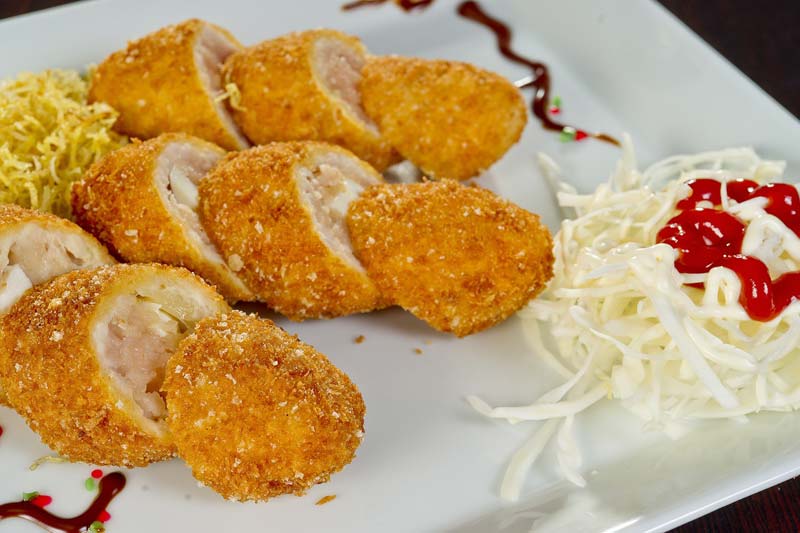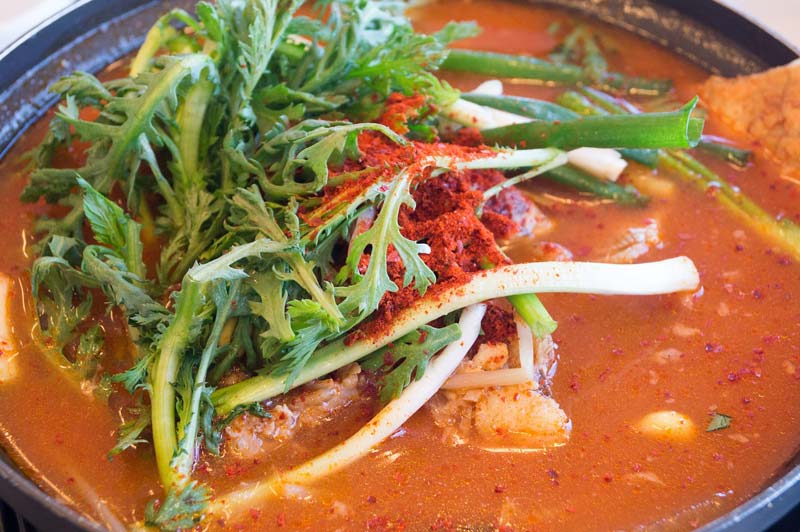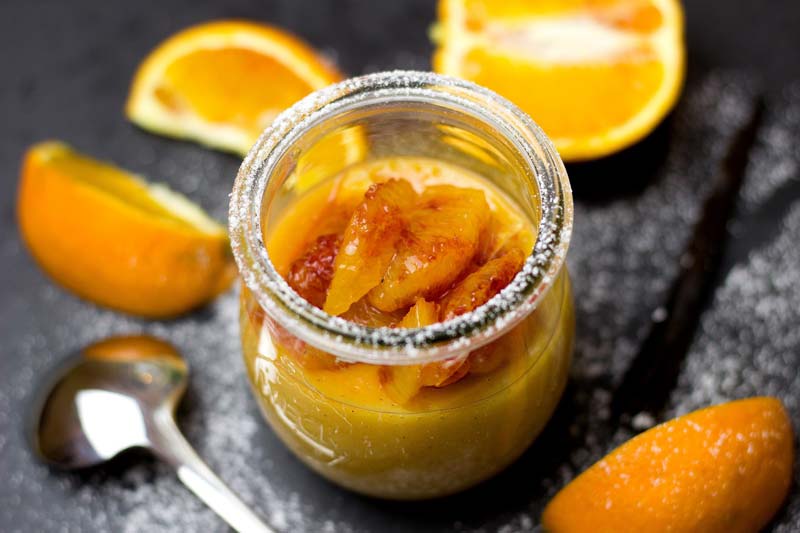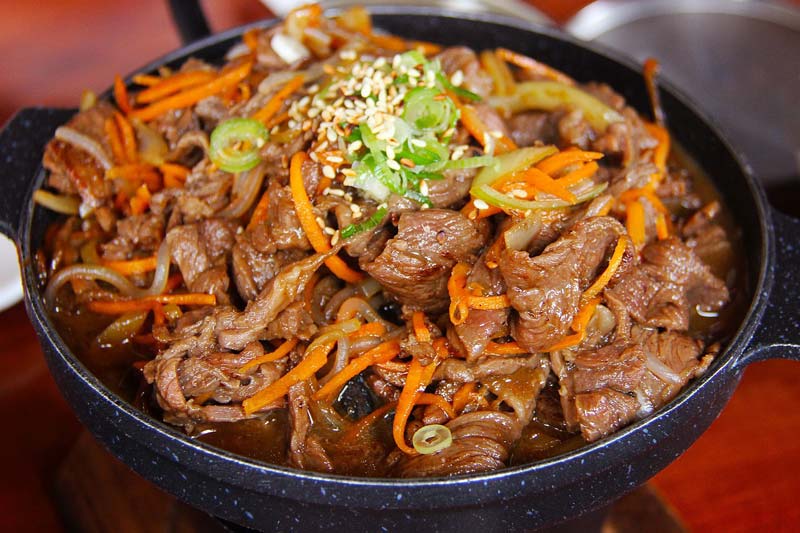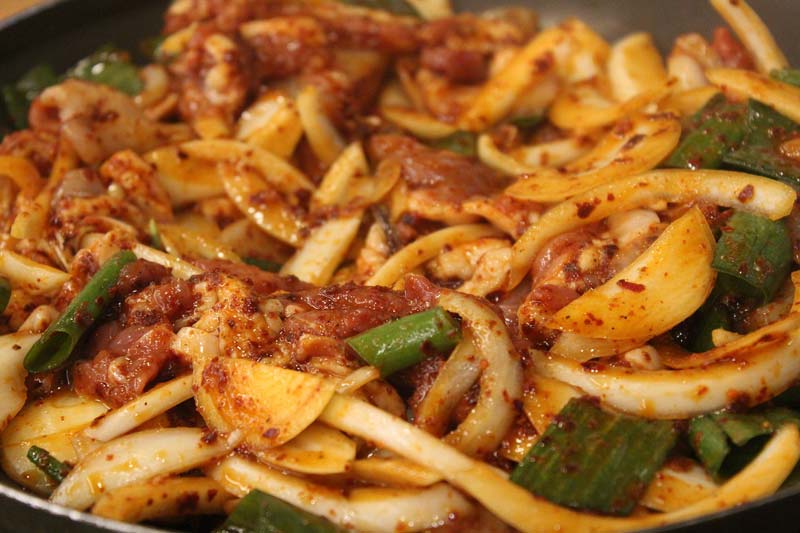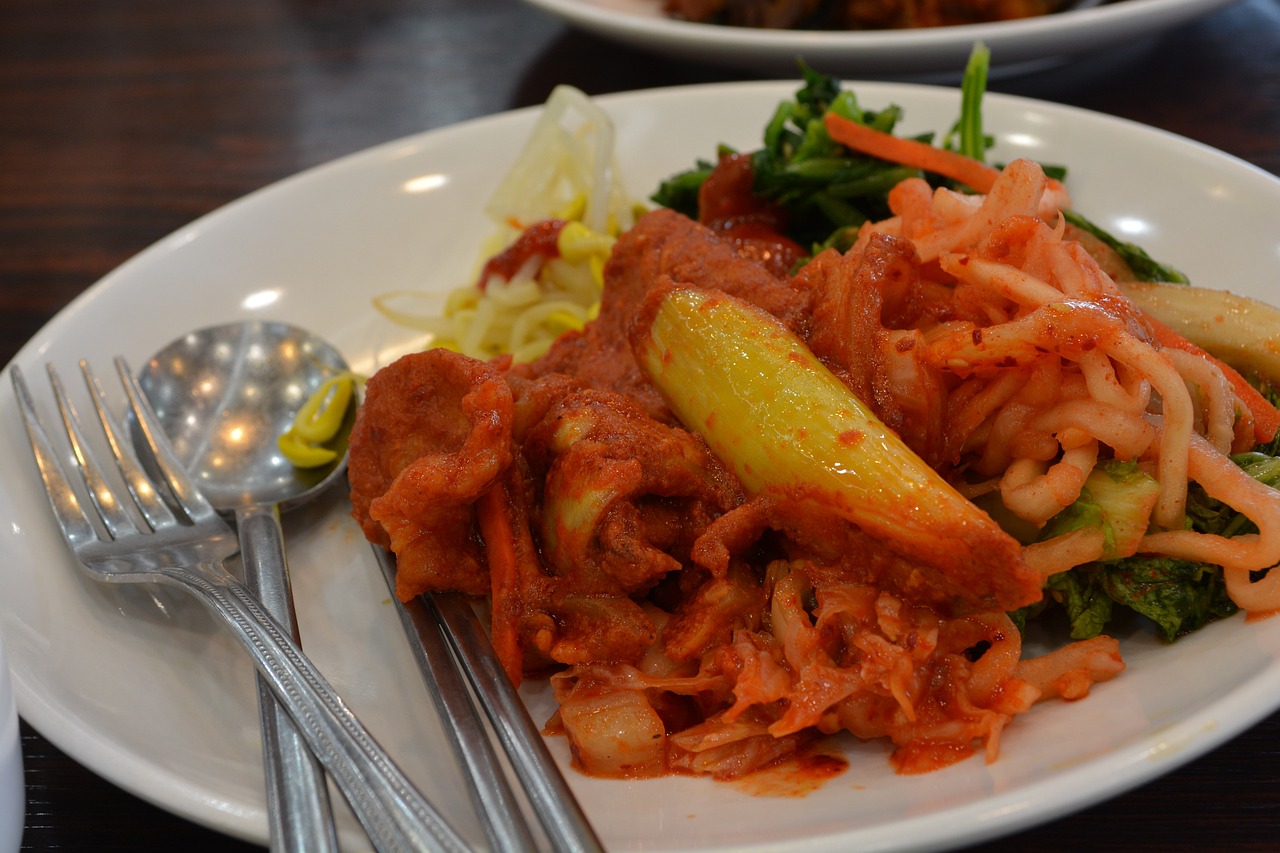Yakgwa (Oil-and-honey Pastry)
In general the pastry which is made by putting honey and oil into flour is called Yumilgwa (oil-and-honey flour pastry), and Yakgwa, Mandugwa (dumpling oil-and-honey flour pastry), Maejakgwa (Maejak oil-and-honey flour pastry), Chasugwa (Chasu oil-and-honey flour pastry), Yohwagwa (Yohwa oil-and-honey flour pastry), Hangwa (oil-and-honey pastry) and Bakge (Bakge oil-and-honey flour pastry) are the kinds of Yumilgwa.
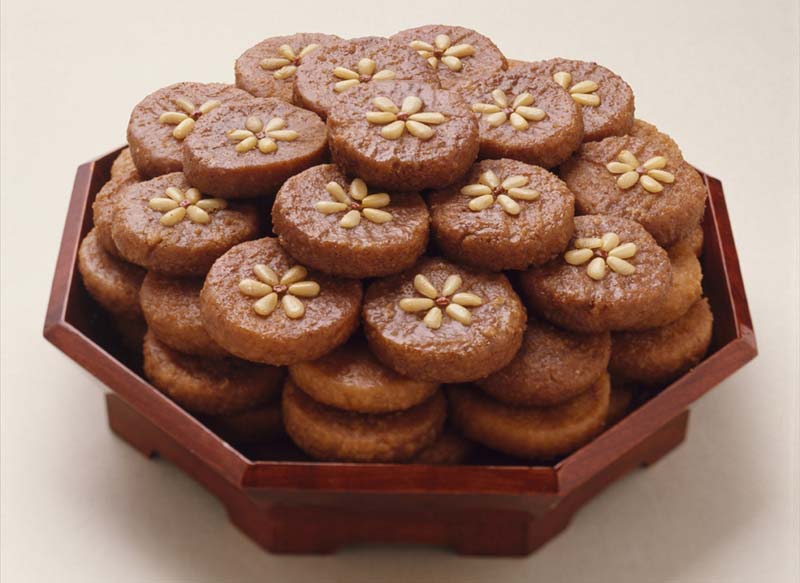
Yakgwa. Oil and honey Pastry, fot. Korea.net / wikipedia
The most popular kind of Yumilgwa among them is Yakgwa, which is made by putting sesame oil, honey, wine and ginger juice into flour, kneading and making shape and putting honey after frying them in cooking oil. As the taste is so sweet, delicious and soft that it gives a feeling like it is melted in the mouth, and that is why it deserves to be treated as a representative “Hangwa.” The word “Yak” in the Yakgwa means medicine and to the food with the word “Yak” in its name medicinal ingredients such as sesame oil and honey are used.
Suksilgwa (Boiled down Fruit Cake)
Suksilgwa is a cake which is made by boiling down various fruits such as chestnuts, dates, pine nuts and ginger. The kinds of Bamcho (boiled down chestnut cake) and Daechucho (boiled down date cake) are made by pan-frying the fruits after putting honey like boiling down process while the kinds of Yulan (meshed chestnut boiled down with honey), Joran (meshed date boiled down with honey) and Saegangran (meshed ginger boiled down with honey) are made by putting honey to the meshed fruit, pan-frying it like boiling down process and making shape like its original fruit shape.
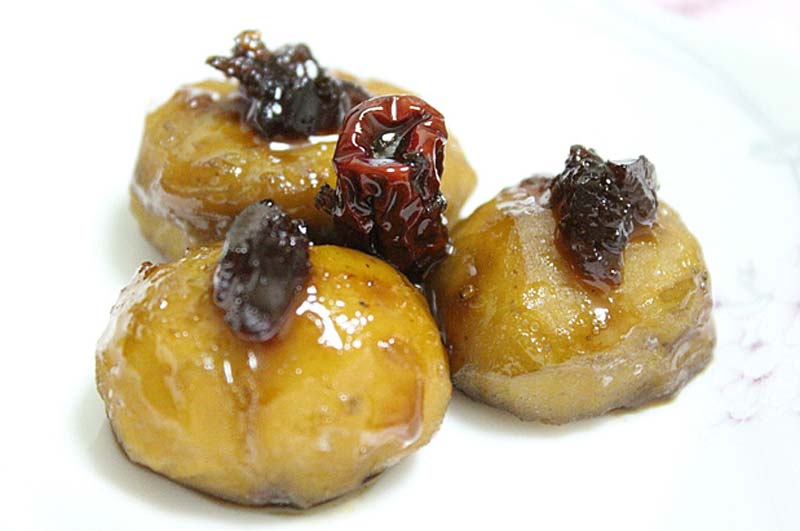
Suksilgwa. Boiled down Fruit Cake, fot. june20y / wikipedia
As good quality fruits are necessary and cooking process required a lot of elaboration, the families of the noble persons in high positions in government were proud of their skills by serving Suksilgwa to guests and at festive occasions. Usually two to three kinds of Suksilgwa are served in one dish.
Dasik (Pattern pressed cake)
The word “Da” in Dasik means tea and therefore Dasik has very close relationship with tea. From old times, Dasik was served together with green tea and the taste of Dasik becomes very unique by harmonizing with mild green tea flavor. Dasik is made by grinding grains, herbs, seeds or nuts, kneading it with honey and pressing in it in a mold for pattern.
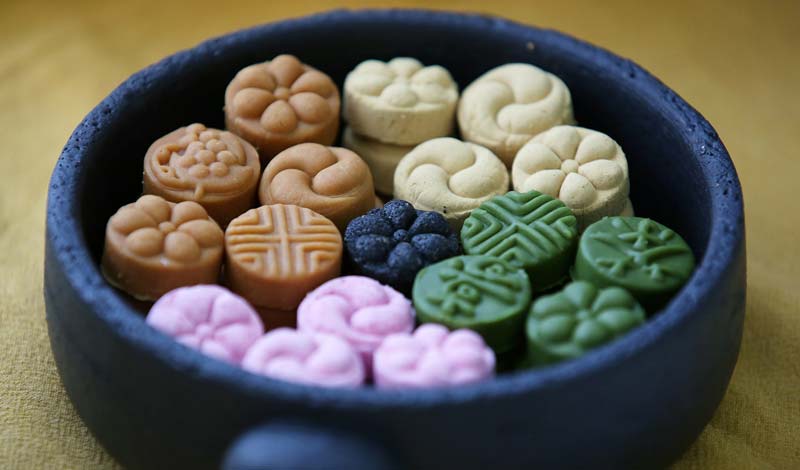
Traditional Korea Dasik, fot. Korea.net / wikipedia
The ingredients which can be taken in raw state are used by grinding in raw state while pan-frying the material before grinding for the ingredients which cannot be taken in raw state. The name of material used for Dasik becomes the name of Dasik. The characteristics of Dasik is that it keeps its own original taste of the material, and it is the essential item to be served for the ceremonial rites such as marriage ceremony, 60th anniversary feast and sacrificial rites.
- Dasik made of grains: Starch Dasik, Flour Dasik, Glutinous rice Dasik
- Dasik made of herb ingredients: Ginger powder Dasik, Ostericum grosseserratum Dasik, longan meat Dasik, arrowroot Dasik, jute root Dasik and cassia bark & ginger Dasik
- Dasik made of nuts: Chestnut Dasik, various fruits Dasik, acorn Dasik, date Dasik and pine nut Dasik
- Dasik made of seeds: Black sesame Dasik, bean Dasik and sesame Dasik
- Dasik made of pollen: Pine pollen Dasik
- Dasik made of animal ingredients: Dried pheasant meat Dasik, slices of dried meat Dasik and flounder Dasik
- Miscellaneous Dasik: Various colored Dasik and Palgwan Dasik
Gwapyeon (Boiled and cooled down fruit and starch cake)
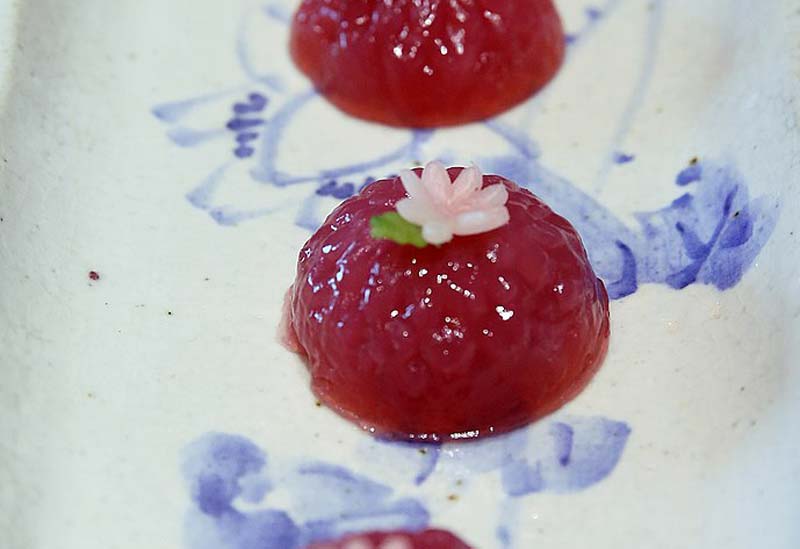
Gwapyeon. Boiled and cooled down fruit and starch cake, fot. Korea.net / wikipedia
Gwapyeon is a kind of fruit jelly which is similar to the jelly in western countries and is made by boiling the fruits with sour taste such as cherry, apricot, Chinese quince or chinensis, putting starch in it to make thick density and cooling it down.
Fruits to make Gwapyeon should have sugar content, pectin substances and organic acid with sweet and sour tastes. In summer season, it was not suitable as it becomes damp and therefore people preferred to make Gwamyeon (boiled and cooled down cucumber and starch cake).
Jeonggwa (Boiled down fruit, roots or seeds with honey)
Jeonggwa is also called “Jeongwa” and is made by boiling down raw fruits, plant roots or seeds in honey. Jeonggwa is similar to jam, jelly or marmalade in western countries. Suitable fruits to make Jeonggwa are the ones such as citron, Chinese quince, hawthorn (haw) and apricot which have abundant cellulose or skins with hard texture while suitable plant roots are lotus root, radish, carrot, ginseng, ballonflower, ginger and burdock.
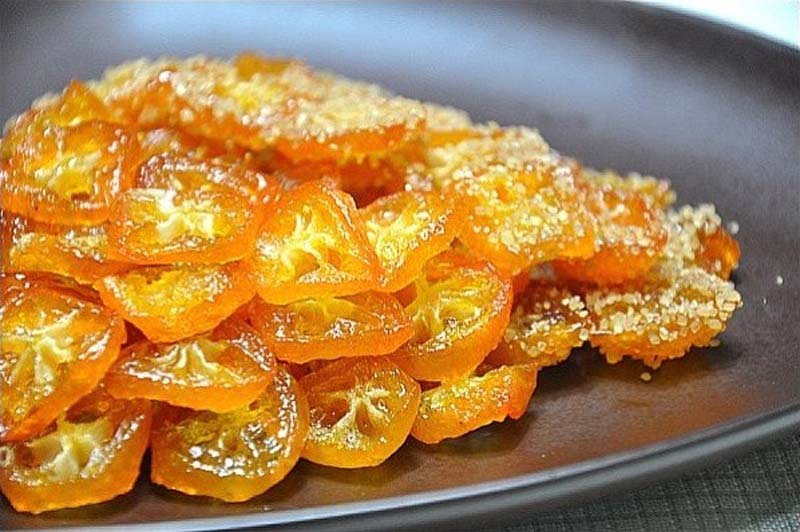
Jeonggwa. Boiled down fruit, roots or seeds with honey, fot. 오서현 / wikipedia
Sometimes dried slices of pumpkin or gourd are used as ingredients for Jeonggwa. Properly cooked Jeonggwa should look dark in color but look clear by boiling down ingredients in honey very slowly. The color of lotus root Jeonggwa is reddish while ballonflower Jeonggwa looks yellowish. Originally only honey was used for boiling down but mixture of clear starch syrup and sugar may be used instead.
Yeot (Wheat-gluten, taffy)
Yeot is a kind of candy which is made by making steamed rice, fermenting it in the water of malt and boiling it down for long hours in a kettle. Yeot in mild state is called Jocheong (grain syrup) and the hardened one after boiling down for longer hours is Gaengyeot (black taffy) while white taffy is made by extending the black taffy for several times before it is hardened.
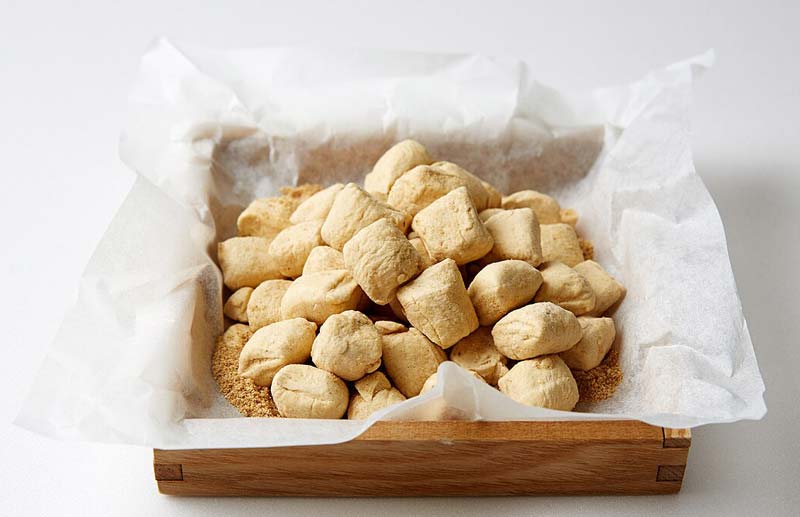
Yeot. A kind of candy which is made by making steamed rice, fot. 국립국어원 / wikipedia
Yeotgangjeong (taffy rice cracker) is made by frying black sesame, green perilla, sesame, beans or pine nuts and putting them into the taffy. Sesame taffy is made either by putting sesame in to taffy or coating taffy with sesame. Taffy sesame cracker is the flat and sliced mixture of taffy and sesame.
Yugwa (Oil and taffy cake)
The word “Yu” in Yugwa means oil as Yugwa is made by frying flattened pieces of glutinous rice in oil. Yugwa is made by fermenting glutinous rice for about two weeks, grinding and steaming it, pounding it in a mortar, flattening and cutting it into suitable pieces. The cut pieces should be dried in the place where there is no wind, the dried pieces are fried in cooking oil and then the fried one is coated with mild taffy first and then fine powder of bean as a second coating
(korfood/korfood8_3.jsp)
